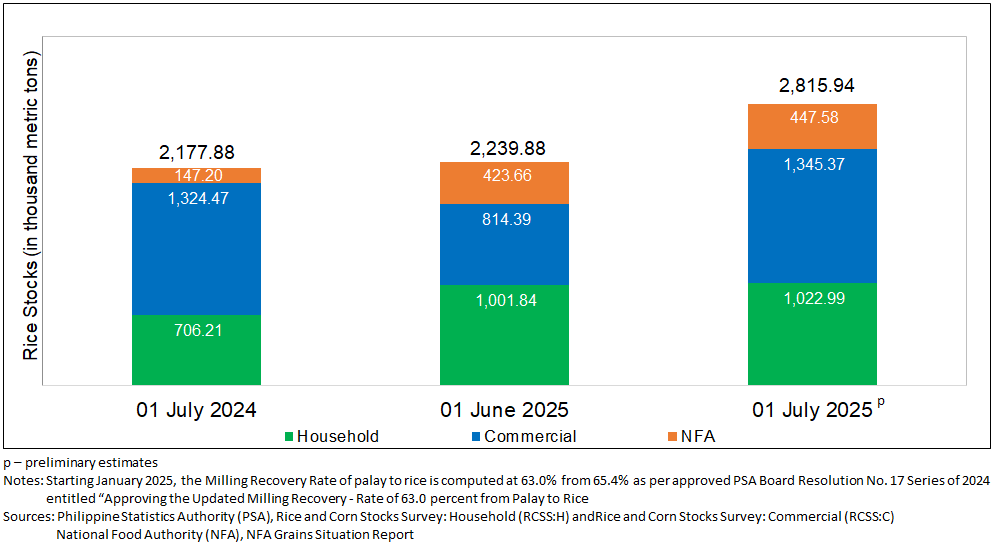The latest national inventory report reveals a significant increase in the country’s rice stocks, with a robust 29.3 percent annual growth as of July 1, 2025. Total rice inventory reached an estimated 2.82 million metric tons, up from 2.18 million metric tons recorded in the same period last year.
Month-on-month, rice stocks also saw a substantial increment, rising by 25.7 percent from June 2025’s inventory of 2.24 million metric tons.
Rice Inventory Breakdown
The annual increase in rice stocks was broadly distributed across sectors:
- National Food Authority (NFA) depositories led with a remarkable 204.1 percent increase.
- Households saw a strong rise of 44.9 percent.
- The commercial sector recorded a steady 1.6 percent increase.
Compared to June 2025 levels, the commercial sector experienced the most significant month-on-month growth at 65.2 percent. NFA depositories increased by 5.6 percent, and households by 2.1 percent.
As of July 1, 2025, the commercial sector held the largest share of the total rice stocks at 47.8 percent, followed by households at 36.3 percent, and NFA depositories at 15.9 percent.
Corn Inventory Overview
In contrast, the country’s total corn stocks inventory as of July 1, 2025, registered a slight decrease, reaching 626.04 thousand metric tons. This represents a 6.4 percent annual decline from the 668.76 thousand metric tons recorded in July 2024.
Month-on-month, corn stocks also exhibited a 3.1 percent decrease from the previous month’s inventory level of 646.39 thousand metric tons.
Corn Inventory Breakdown
Annually, corn stocks from the commercial sector recorded a 13.7 percent decrease. However, household corn inventories showed a significant annual increase of 117.9 percent, indicating a shift in stock distribution.
Relative to June 2025, the volume of corn stocks from the commercial sector decreased by 6.6 percent, while household corn stocks increased by 28.8 percent.
The majority of this month’s total corn stocks inventory, approximately 87.0 percent, was held by the commercial sector, with the remaining 13.0 percent attributed to households.




